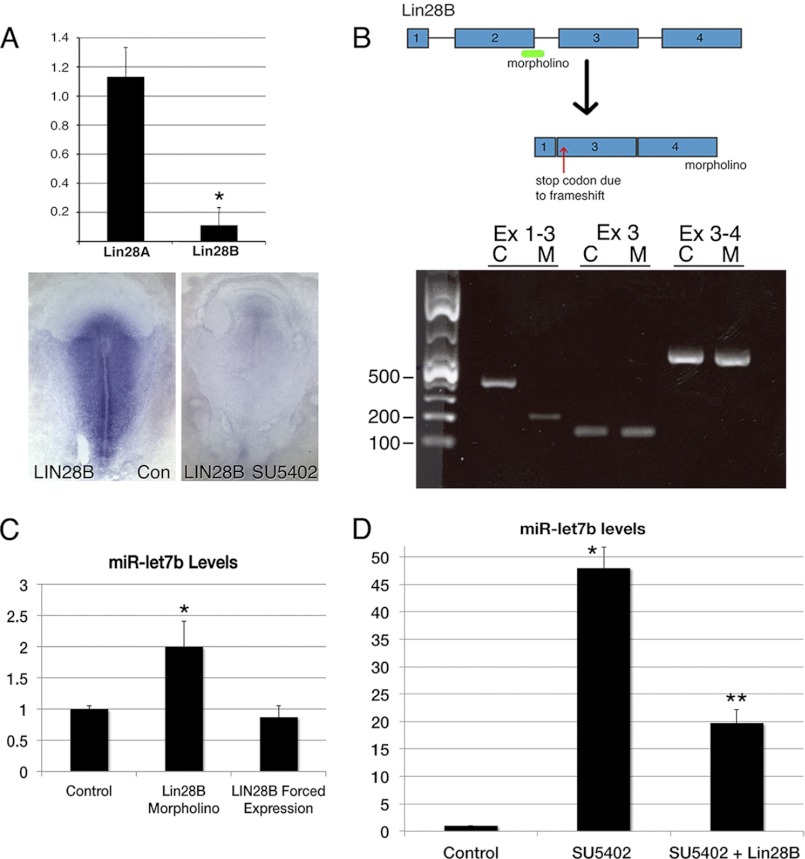FIGURE 3.
LIN28B regulation of miR abundance. A, real-time RT-PCR comparison of LIN28A and LIN28B mRNA levels in samples from primitive streak regions of control (Con) versus SU5402-treated embryos. LIN28B mRNA levels are reduced 10-fold by inhibition of FGF signaling, whereas LIN28A mRNA levels are unchanged. LIN28B ISH analysis of control versus SU5402-treated embryos. B, top, exon-intron structure of the LIN28B gene, showing the location of the splice blocking morpholino at the exon2-intron-2 boundary that is predicted to cause skipping of exon 2 and introduction of a premature in frame translation stop codon. Bottom, RT-PCR analysis of RNA isolated from HH stage 4 embryos electroporated with a control (C) or LIN28B (M) morpholino. The PCR product generated using primers spanning exons 1–3 shows the expected 382-nucleotide product for the control morpholinos sample and the 194-nucleotide product for the sample electroporated with the LIN28B morpholino, reflecting the absence of exon 2. C, normalized levels of miR-let-7b in samples from embryos electroporated with control or LIN28B-targeting morpholinos. The LIN28B morpholino increases let-7b levels 2-fold. Forced expression of LIN28B has no effect on let-7b levels. D, forced expression of LIN28B in SU5402-treated embryos (SU5402 + LIN28B) reduces let-7b levels relative to SU5402-treated embryos electroporated with a control plasmid. Asterisks indicate changes in mRNA levels that are statistically significant (p < 0.05). Error bars in A, C, and D indicate S.E.

